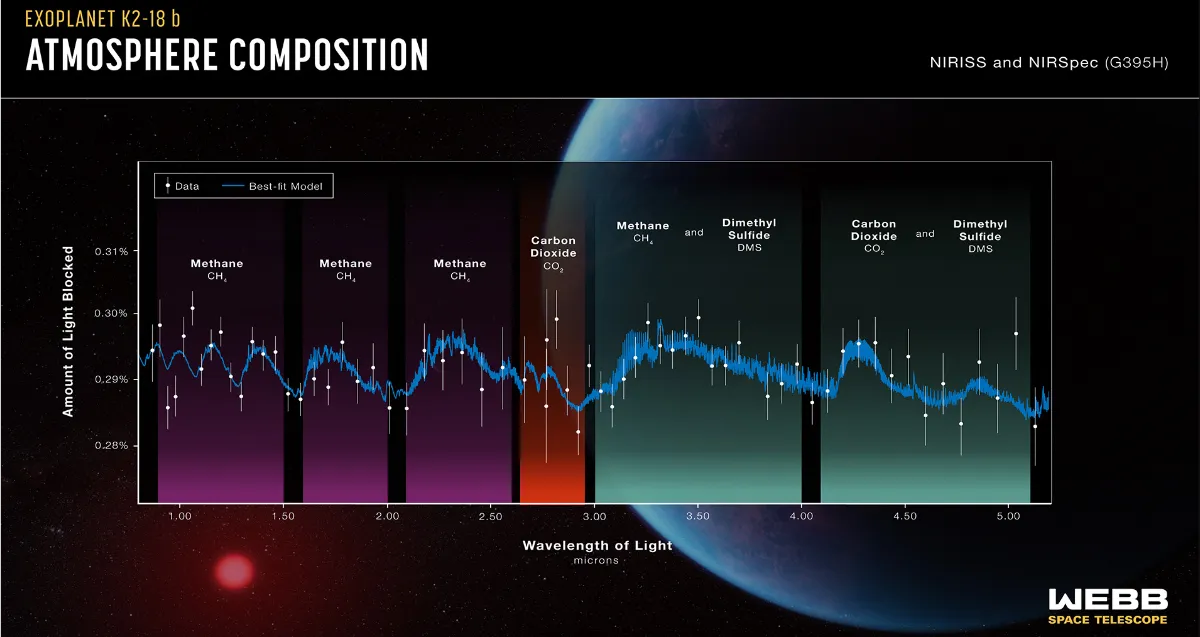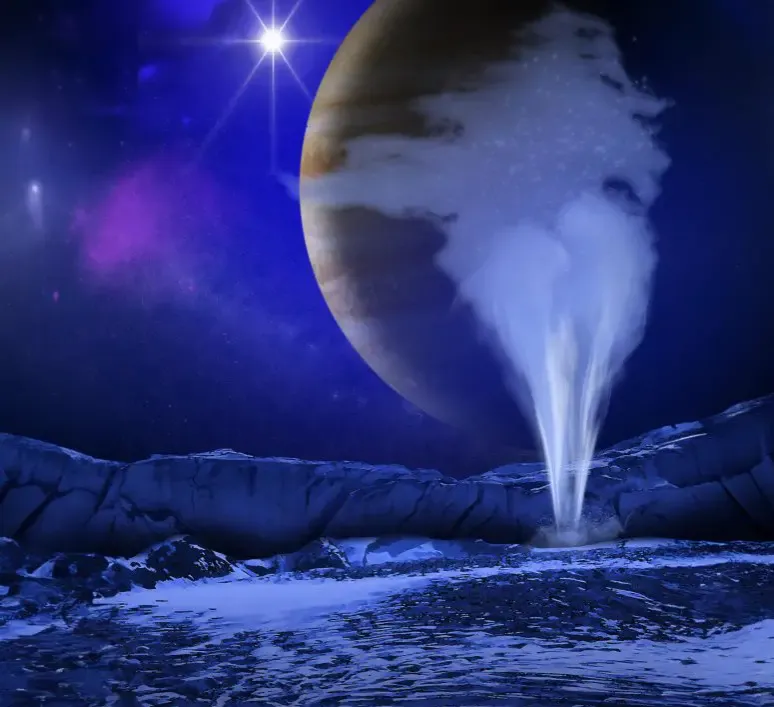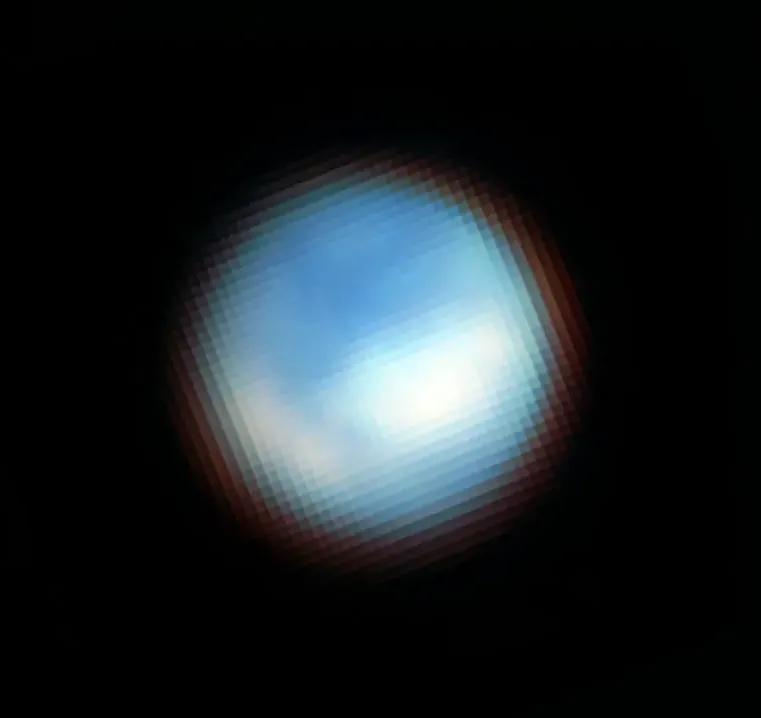Webb Update
Craig Shearer - 25th September 2023
We certainly live in exciting times. There’s been recent news about some potentially exciting discoveries made by the James Webb Space Telescope (JWST).
One of the features of the JWST is the ability to do spectrographic analysis of the light it receives, and that allows inferring the chemicals present in the source. Recently, it’s been revealed that there’s a possible discovery of dimethyl sulphide (known as DMS), methane, and carbon dioxide in the atmosphere of a planet 120 light years away from us. The planet, poetically named as K2-18b, and nearly 9 times the size of Earth, could possibly have a water ocean. Significantly, if the discovery pans out, and further confirming results are expected in a year, this could point to potential life on the planet. On Earth, DMS is only produced by life, so it’s certainly a possible indicator of life when discovered.

Of course, we have only our own planet to examine when it comes to determining whether a particular chemical signature is a sign of life. It’s certainly possible that there could be physical, non-biological explanations for its presence, but it certainly is tantalising.
Closer to home, Webb has been pointed at Jupiter’s moon Europa, which is covered in ice. It’s believed that there are vast oceans of liquid salt water beneath the ice, and a recent discovery by JWST revealed the presence of solid carbon dioxide on the moon’s icy crust. Scientists now suspect that the carbon dioxide originated from beneath the crust, in the oceans. This is yet another potential piece of evidence for life.

An artist’s impression of a plume being emitted from the surface.
Of course, artist’s impressions based on the science results are beautiful, but the reality of what the JSWT can see is a little different.

What the JWST actually sees
Next year, the European Space Agency will launch a mission to Europa, and it’s scheduled to arrive there in 2030. It’s planned to do 50 flybys of the moon and will be as close as 25 km from its surface. It will be exciting to see the results of that! Alas we’ve got the best part of a decade to wait.
And, unrelated to the JWST, there’s recently been some news about the possibility of life on Mars! Back in 1976 the Viking mission to Mars might have unknowingly found and killed alien life.
I remember reading about the tantalising results of those Viking missions and the findings being ambiguous. More recently though, the Perseverance Rover has been collecting scientifically-selected samples from Mars. From the analysis so far, it seems that there’s complex organic molecules on the surface, which could indicate potential for supporting life.
This is obviously going to be a “watch this space” story. My suspicion is that life, at least, in the form of amoeba-sized life, is probably ubiquitous in the universe. Just not the kind that builds spaceships and comes to visit us!